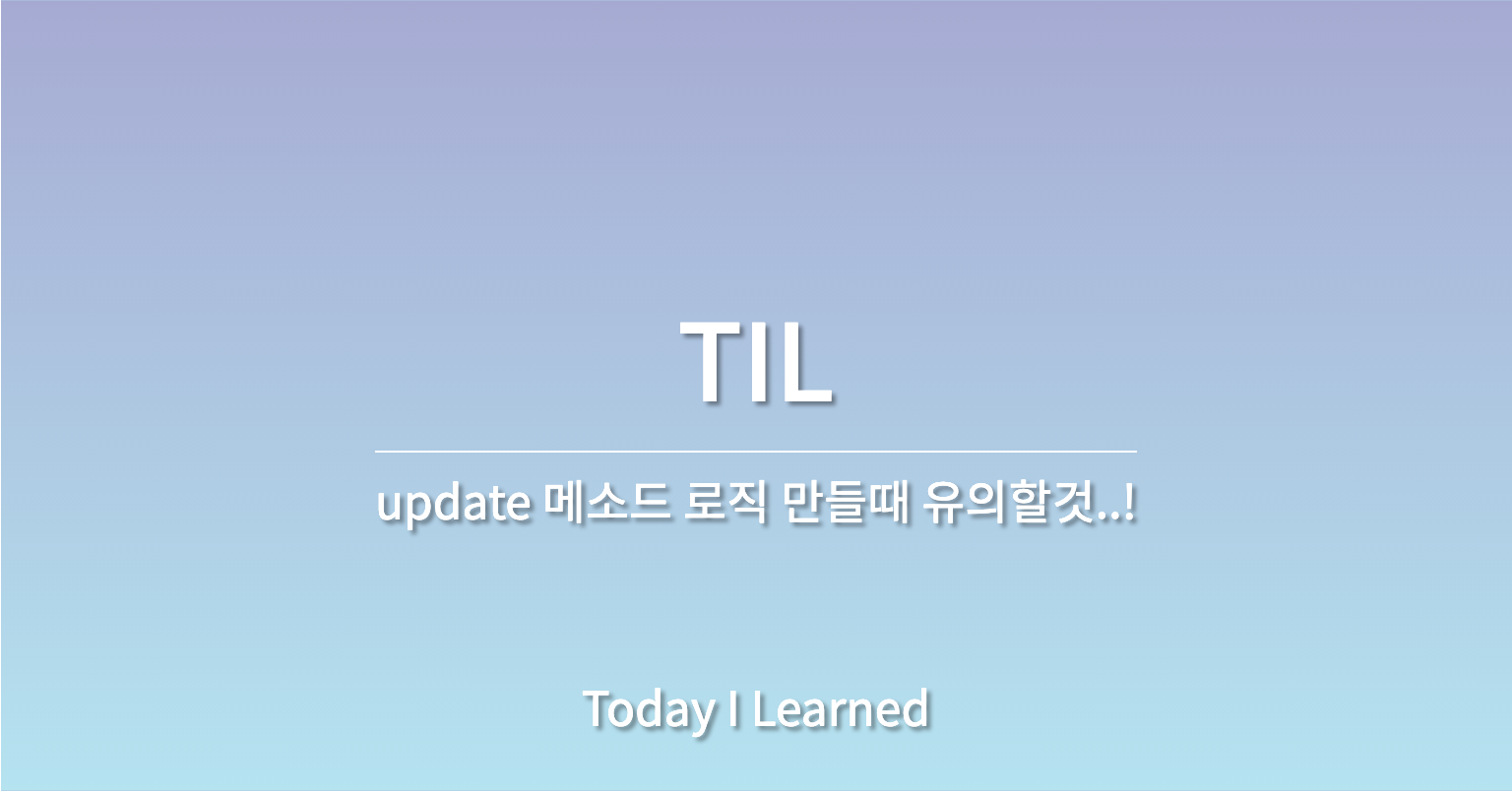
🌱 서론
- 일반적으로
update메소드를 만들 때는 다음과 같은 과정을 거친다.
- 유일한 값으로 수정할 데이터를
DB에서 불러온다. - 기존데이터를 수정할 데이터로 변경해준다.
- 변경한 데이터를 다시 저장한다. (
JPA에서는set으로 자동update가 된다.)
-
보통 데이터를 조회하기 위한 유일값은
id를 사용하지만, 실무에서는 그렇지 않은 경우도 꽤 있다. -
최근 개발하고 있는
Template Admin project에서는Template의 고유 코드 값으로 조회한다.
그런데 문제는, 이 코드값도update메소드에서 변경이 가능하도록 만들어야 한다.
그렇기에, 보통update메소드와 달리 몇가지 체크할 로직이 있었다.
💡 고려해야할 두가지
-
JPA에서 보통entity를 만들 때,id값에 어노테이션으로@GeneratedValue를 주어서 중복되지 않도록 한다. -
하지만 이 경우, 코드값을 수정할 때, 수정된 코드값이 이미
db에 있는 값인지 중복 체크를 해주어야한다. -
하지만, 만약에 코드값을 변경하지 않는다면, 수정하기위해 불러온
entity의 코드와, 수정할request dto의 코드 값이 같아서 중복 체크에 걸리게 된다. -
그렇기에, 고려해야할 것은 첫째로 중복체크 로직과 둘째로 코드를 변경하지 않고 다른 것을 변경할 경우 두가지를 고려하여 로직을 짜줘야한다.
⚙️ 자, 그럼 개발해볼까?
@Query("select count(*) from NotificationTemplate n where n.templateCode = :code") int checkDuplicateCode(@Param("code") String code);
-
중복체크하는 쿼리다.
JPQL을 사용하여 쿼리를 만들어줬다. -
JPQL에서는DB테이블이 아닌,Entity객체에서 조회한다.
public TemplateDto updateTemplate(String templateCode, TemplateDto templateDto) { int check = templateRepository.checkDuplicateCode(templateDto.getTemplate_code()); NotificationTemplate notificationTemplate = findTemplate(templateCode); if (!notificationTemplate.getTemplateCode().equals(templateDto.getTemplate_code())) { if (check > 0) { throw new DuplicationCodeException(); } } notificationTemplate.setSubject(templateDto.getSubject()); notificationTemplate.setContent(templateDto.getContent()); notificationTemplate.setTemplateCode(templateDto.getTemplate_code()); notificationTemplate.setEnabled(templateDto.getEnabled()); return new TemplateDto(notificationTemplate);
-
update메소드 로직이다. -
첫째로,
templateCode로entity를 찾는다. -
request dto와entity의code를 비교하여 같다면 그대로 수정해주면된다. -
같지 않은 경우,
request dto의 코드값을db에서 비교해준다. (checkDuplicateCode메소드를 사용)🙏 오늘의 TIL을 마치며
-
실무에서는 항상
id값을 통해entity를 조회하지는 않는다.
조회하는 여러가지 경우가있고,client쪽에서 요구하는대로 로직을 만들어야하기 때문이다. -
이럴 경우 중복체크와, 중복체크시 유의해야 할점을 놓치지 말자.
-
그럼 이만 ! ✋
